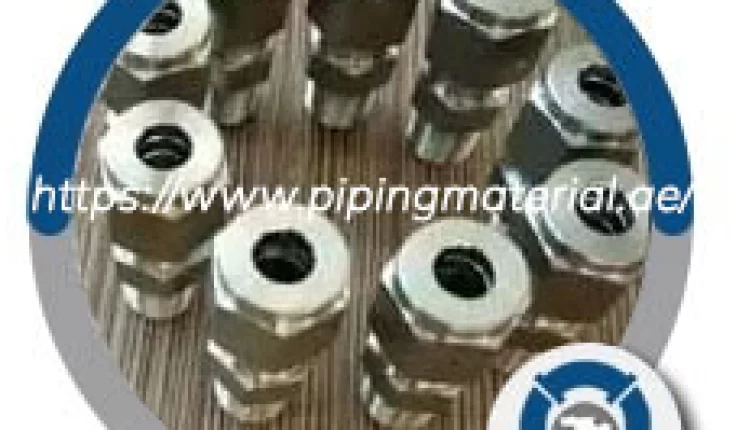Incoloy 825 Tube Fittings
0 Views

Nickel alloy tube fittings and hydraulic fittings are specialized components used in various industrial applications, from petrochemical and oil and gas production to chemical processing. They are designed to be durable, corrosion-resistant, and able to handle the high-pressure fluid transfer. In this article, we will discuss what nickel alloy tube fittings are, the different types of hydraulic fittings, how to properly install hydraulic hose fittings and the differences between Incoloy 800 and Incoloy 825 tube fittings. Understanding these components is crucial for ensuring the safe and efficient operation of hydraulic systems in various industrial settings.
What are nickel alloy tube fittings?
Nickel alloy tube fittings are a type of fitting made of nickel alloys, used in various industrial applications such as petrochemical, oil and gas, and chemical processing. They are designed to be durable and corrosion-resistant, making them ideal for harsh environments. Common nickel alloys used for tube fittings include Monel, Inconel, and Hastelloy. These fittings are available in various shapes and sizes, including elbows, tees, and couplings. They can be used for various applications, including pressurized fluid transfer, instrumentation, and process control.
What are hydraulic fittings?
Hydraulic fittings are specialized fittings used in hydraulic systems to connect hydraulic hoses, tubes, and pipes. They are designed to be used with fluid under high pressure and provide a secure, leak-free connection. The primary function of hydraulic fittings is to join two sections of a hydraulic system and to maintain fluid pressure and flow.
There are several types of hydraulic fittings, each with its unique features and benefits. Some common types include compression fittings, O-ring fittings, and JIC fittings. Compression fittings use a compression nut to clamp the hose onto the fitting, creating a leak-free connection. O-ring fittings use an O-ring to seal the connection and provide additional protection against leaks. JIC fittings are popular for their ease of installation and use a 37-degree flare to connect hoses to fittings.
Hydraulic fittings come in a variety of materials, including steel, stainless steel, brass, and aluminum, and are often coated with zinc to provide additional protection against corrosion. The choice of material depends on the specific application and the environment in which the fittings will be used. It’s important to select the right type of hydraulic fitting for a particular application to ensure a secure, leak-free connection and proper functioning of the hydraulic system.
How to install hydraulic hose fittings?
Installing hydraulic hose fittings is a critical step in ensuring the safe and efficient operation of a hydraulic system. Proper installation of these fittings helps to prevent leaks and ensure that the system operates at the desired pressure and flow rate. The following steps outline the process for installing hydraulic hose fittings:
- Clean the hose end and the fitting: Before installing the fittings, it’s important to clean the hose end and the fitting thoroughly to ensure a secure and leak-free connection. Dirt, debris, or contaminants can weaken the connection and lead to leaks.
- Slide the hose over the fitting: Slide the hose over the fitting until the end of the hose is flush with the end of the fitting.
- Place the ferrule over the hose: The ferrule is a metal ring that provides additional support to the hose and helps to prevent leaks. Place the ferrule over the hose and ensure it is positioned correctly.
- Crimp the ferrule onto the hose: Insert the hose and ferrule into the crimping machine and crimp the ferrule onto the hose. The crimping machine will squeeze the ferrule onto the hose, creating a secure and leak-free connection.
- Inspect the connection: After crimping, inspect the connection for leaks and tighten any loose connections. It’s also a good idea to test the system under pressure to ensure the connection is secure and that there are no leaks.
It’s important to follow the manufacturer’s instructions for installing hydraulic hose fittings and to use the proper tools and techniques to ensure a secure and leak-free connection. In addition, it’s important to regularly inspect and maintain hydraulic fittings to ensure they are functioning correctly and to prevent potential problems from developing over time.
Incoloy 800 vs Incoloy 825 tube fittings
Incoloy 800 and Incoloy 825 are two of the most commonly used nickel alloys for tube fittings. They are both highly corrosion-resistant and durable, making them ideal for harsh industrial environments. However, there are some differences between the two alloys. Incoloy 800 Tube Fittings has a higher nickel content and is better suited for high-temperature applications, while Incoloy 825 Tube Fittings has a higher molybdenum content and is better suited for applications that require better corrosion resistance. Both alloys are widely used in the petrochemical, oil, gas, and chemical processing industries for tube fittings, and the choice between the two will depend on the specific application and environment in which the fittings will be used.
Incoloy 825 tube fittings can be sourced from various suppliers, both online and offline. It’s important to research different suppliers and compare their prices, product quality, and delivery times before making a purchase. Working with a reputableIncoloy 825 tube fittings supplier can help to ensure that you receive high-quality that meet your specific requirements and applications. In addition, it’s also a good idea to check for certifications and accreditations, such as ISO 9001 or API Q1, to ensure that the supplier follows industry standards for quality and performance.
Related Posts
How Do You Choose the Right Angle Bar Size and Material for Your Project?
Andrin Andrin / July 18, 2024











